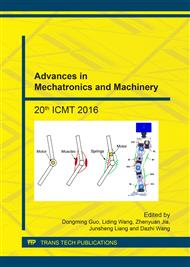p.124
p.139
p.151
p.158
p.166
p.172
p.178
p.183
p.192
Comparative Analysis of Flow Field in Mixed and Non Mixed Gas Electrochemical Machining for Aero-Engine Turbine Blade Cooling Holes
Abstract:
By the cooling holes in aero-engine turbine blade as the research object, this study focuses on two kinds of ECM methods, which are mix gas added to the nonlinear electrolyte (NaNO3) and non-mixed gas. Mixed and non-mixed gas ECM experiments of turbine blade cooling holes were carried out respectively. The corresponding two-dimensional CAD model of cooling hole was constructed combined with the experimental data and theoretical analysis. Numerical simulation analysis was carried out of the flow field base on the above models by using the fluid dynamics analysis software FLUENT. The influence flow velocity and flow velocity distribution on the machining accuracy and efficiency of ECM were investigated in detail. The vortex zone distribution of gas-NaNO3 mixed phase flow field and single NaNO3 solution flow field was analyzed qualitatively. The simulation results indicated that the flow velocity in the machining gap with mixed gas was significantly higher than the velocity during ECM process for cooling holes. The electrolytic products and heat were washed away completely, the electrolyte can be updated in time. Fluid vortex zone distribution was improved obviously, the flow field distribution became more uniform after mixed gas in ECM process. The machining accuracy and efficiency for cooling holes making may be improved greatly with gas mixed in electrolyte NaNO3.
Info:
Periodical:
Pages:
166-171
Citation:
Online since:
July 2017
Authors:
Keywords:
Price:
Сopyright:
© 2017 Trans Tech Publications Ltd. All Rights Reserved
Share:
Citation:


